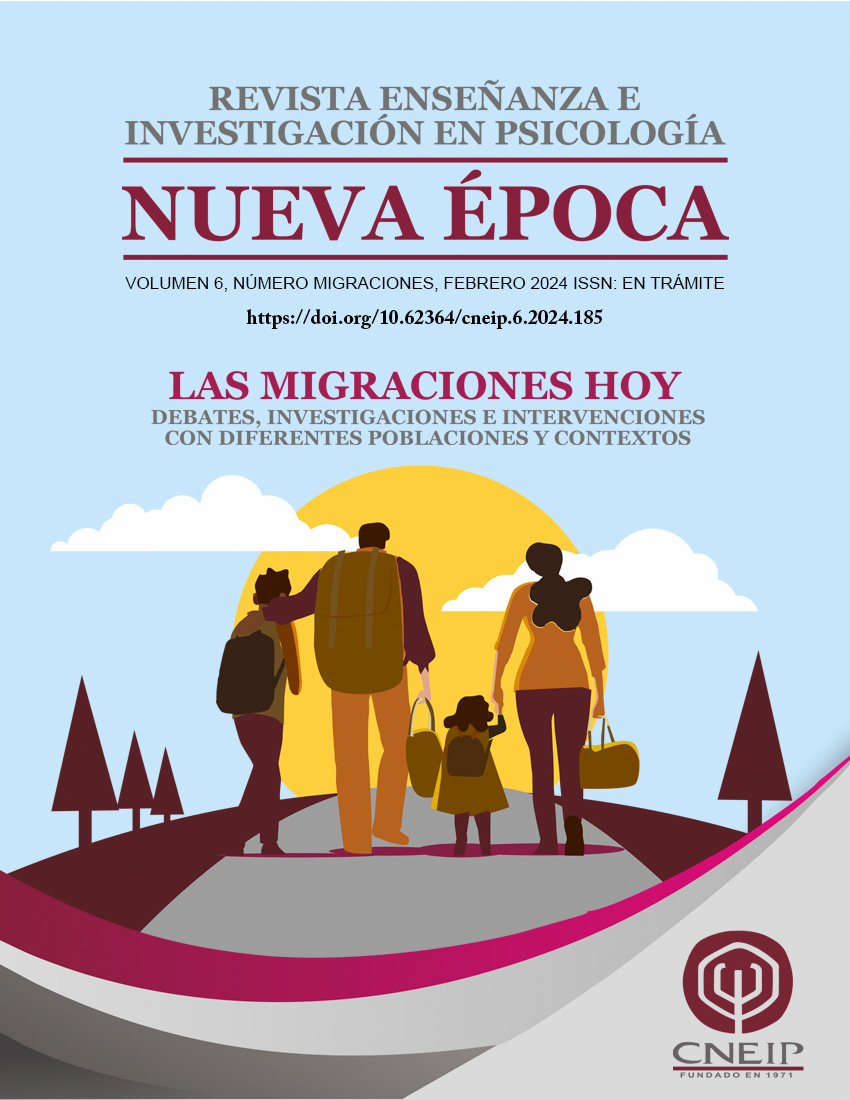Abstract
The Bracero Program was a temporary labor agreement between Mexico and the United States to hire Mexican agricultural workers. In order to identify and make visible the psychosocial impacts that ex-braceros faced and continue to face, a systematic review was carried out in the Redalyc, Scielo and EBSCO databases using the keywords bracero, ex-bracero and Bracero Program. Studies published from 2013 to 2023 were reviewed, finding a total of 1,518 documents, of which 33 articles met the inclusion and exclusion criteria. Finally, six articles were selected to evaluate the psychosocial variables: discrimination, psychological violence, working, housing and health conditions. The selected articles highlight that, although the experiences were diverse, in general the ex-braceros experienced adversities associated with the violation of their human rights and the breach of contracts, a situation that explains the emergence of their social struggle movement.
References
Albertí, A. V. (2012). Una reflexión teórica en torno a las migraciones laborales, a través del caso histórico del Programa Bracero (1942-1964). Nómadas. Revista Crítica de Ciencias Sociales y Jurídicas. https://www.redalyc.org/articulo.oa?id=18126163020
Astorga-Morales, A. & Schaffhauser-Mizzi, P. (2022). Ex braceros mexicanos. Un movimiento social transnacional de (ex) migrantes. HiSTOReLo. Revista de Historia Regional y Local, 14(31), 93-123. https://doi.org/10.15446/historelo.v14n31.95464
Be, P. A. & Salinas, C. (2019). La(s) masculinidad(es) en juego bajo la experiencia migratoria de ex braceros de Telchac Pueblo, Yucatán. Cuadernos Inter.c.a.mbio sobre Centroamérica y el Caribe, 18(1), 97-117. https://doi.org/10.15517/c.a..v16i1.36436
Córdoba, R. (2021). Ser trabajador transfronterizo. La experiencia de Antonio González. Estudios de Historia Moderna y Contemporánea de México, 62, 245-267. https://doi.org/10.22201/iih.24485004e.2021.62.7712
Delgado, W. R. & Mañán, O. (2005). Migración México-Estados Unidos e integración económica. Política y cultura, 23, 9-23. http://www.scielo.org.mx/scielo.php?script=sci_arttext&pid=S0188-77422005000100002&lng=es&tlng=es
Durand, J. (2007). El programa bracero (1942 -1964). Un balance crítico. Migración y Desarrollo, 9, 27-43. http://www.redalyc.org/articulo.oa?id=66000902
García, A. (2021). Regulating Bracero Migration: How National, Regional, and Local Political Considerations Shaped the Bracero Program. Hispanic American Historical Review, 101(3), 433–460. https://doi.org/10.1215/00182168-9051820
García, R. H., Martínez, C. B., Méndez, C., M. E., Pérez, M. A., López C, S. & Mendieta, R. A. (2022). Condición y posición de género de personas adultas mayores durante procesos migratorios en Chiautzingo, Puebla, México. Migraciones Internacionales, 13. https://doi.org/10.33679/rmi.v1i1.2339
Mitchell, D. (2013): Labour’s geography and geography’s labour: California as an (anti-) landscape. Geografiska Annaler: Series B, Human Geography, 95(3), 219–233.
Rivera-Heredia, M. E. (2021a). Los exbraceros y sus familias: impacto psicosocial, económico y en salud del programa de trabajadores agrícolas migrantes, siete décadas después de su inicio. Proyectos aprobados en 2021. Coordinación de Investigación Cientifica de la Universidad Michoacana de San Nicolás de Hidalgo https://www.cic.umich.mx/proyectos-de-investigacion/cic/2021/proyectos-aprobados.html
Rivera-Heredia, M. E. (2021b). Superando tiempos difíciles: cuentos y relatos sobre migración y derechos humanos. Universidad Michoacana de San Nicolás de Hidalgo.
Rivera-Heredia, M. E., Ramírez, S. M. & Monroy, I. R. (2023). Entre el activismo y el olvido ante los ex braceros y sus familias. En E. Fernández Guzmán y M. Reyes Tovar (coords.). Perspectivas migrantes: retos teóricos-metodológicos y realidad presente. Ediciones Comunicación Científica Universidad de Guanajuato. https://doi.org/10.52501/cc.121.10
Peralta, M. C. (2004). El acoso laboral - mobbing- perspectiva psicológica. Revista de Estudios Sociales, 18, 111-122. http://www.scielo.org.co/scielo.php?script=sci_arttext&pid=S0123-885X2004000200012&lng=en&tlng=es
RosPats Educación (2022, 10 de agosto). PSG Educación. C64. María Elena Rivera Heredia presenta ¿Cómo recuperar la memoria colectiva para reconocer a los exbraceros y a su movimiento de lucha social? [Video]. Youtube. https://www.youtube.com/watch?v=aSf_oU5lHwA
Trujillo-Bolio, M. (2022). Éxodo laboral de mexicanos en el entorno del programa bracero. Signos Históricos, XXIV(48), 384-427. https://www.scielo.org.mx/scielo.php?script=sci_arttext&pid=S1665-44202022000200384&lang=es
Uribe, A. B., Covarrubias, K. Y., & Uribe Alvarado, I. G. (2013). El Programa Bracero: los herederos generacionales de la migración mexicana transnacional y la cofradía identitaria. Estudios sobre las culturas contemporáneas, XIX(Número especial I), 17-50. http://www.redalyc.org/articulo.oa?id=31629857002
Uribe, A. B., Covarrubias, K. Y. & Uribe Alvarado, J. I. (2009). La metodología mixta en un estudio sobre los exbraceros colimenses: una experiencia interdisciplinaria para comprender una realidad compleja. Estudios sobre las culturas contemporáneas, XV(30), 123-154. http://www.redalyc.org/articulo.oa?id=31612027007

This work is licensed under a Creative Commons Attribution-NonCommercial-NoDerivatives 4.0 International License.





